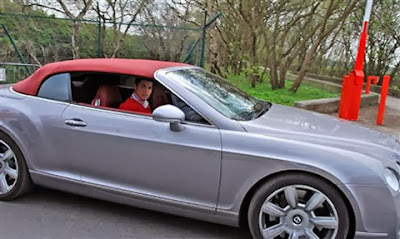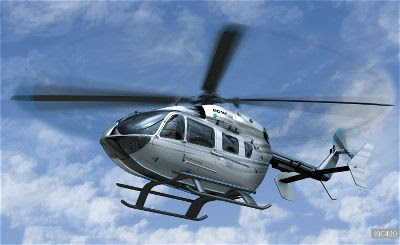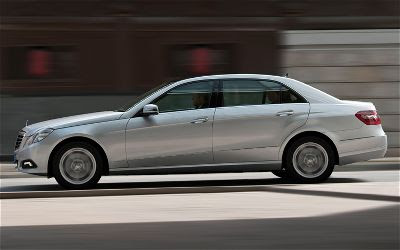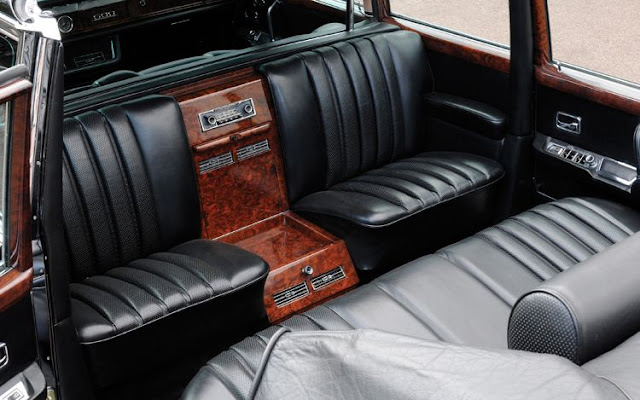No other vehicle is as seared into the memory of a nation as the Lincoln limousine
President John F. Kennedy rode in during his assassination on November 22, 1963, in Dallas.
Five decades after those gunshots forever changed a nation, that same limo remains on display at The Henry Ford Museum in Dearborn, Michigan.
"A lot of people assume it was destroyed, or locked away in some warehouse never to be seen again,"
Matt Anderson, the museum’s curator of transportation, told the News.
The 1961 Lincoln’s incredible history continued long after the tragic events that unfolded in Dallas. Only five months after Kennedy’s assassination, the car was fully rebuilt, upgraded with bulletproof armor, and returned to the Presidential motorcade.
It would remain in service for another 13 years.
"It’s true," Anderson explained. "[The Lincoln] was fully rebuilt after the investigation and every subsequent President up to Gerald Ford used this vehicle."
The car’s return to official duty didn’t go without a hitch, however. "Lyndon Johnson himself insisted the car be painted black," said Anderson. "I’ve read anecdotally that he was never comfortable riding in the car."
Johnson and his wife, Lady Bird, were riding in the same motorcade in Dallas the day Kennedy was shot and killed.

ZAPRUDER FILM © 1967 (RENEWED 1995) THE SIXTH FLOOR MUSEUM AT DEALEY PLAZA
This frame from the Zapruder film shows the presidential limo right after Kennedy was shot.
First delivered to Kennedy in June of 1961, the Lincoln Continental convertible was originally painted a deep shade of midnight blue and given the code name of "X-100" by the Secret Service.
The clean and elegant lines of the new Continental "was a big shift away from the aesthetics of the 1960s…it was full of youth and vigor," says Anderson. "I think this car is a very special case for a President and a vehicle matching perfectly."
While many people are surprised to learn the car wasn’t originally armor-plated, the Lincoln was still highly modified compared to a standard model.
Built by a Hess & Eisenhardt of Cincinnati, Ohio, the Lincoln was cut in half and stretched by more than three feet. Special leather and seat padding was installed, along with a PA system, radio telephone, lights, sirens, and various externally mounted steps and grab-handles for Secret Service agents.
The car’s rear seat could also be raised more than 10 inches by hydraulics.
In total, the modifications pushed the car’s normal base price, which was approximately $7,300, upwards to roughly $200,000. In today’s dollars, that comes out to about $1.5 million, according to Matt Anderson of The Henry Ford.

JUSTIN NEWMAN/AP
Secret Service agent Clint Hill jumped onto the back of the limousine after the shooting.
Three types of tops were constructed for the Lincoln, though most history buffs (and conspiracy theorists) are most familiar with the clear Plexiglas roof – it was nearly used when rain threatened JFK’s trip to Dallas.
"Standard procedure was to not use that top," explains Anderson. "So there was nothing unusual about it that day in Dallas." Neither the clear plastic top, nor any of the others, was bulletproof.
After the assassination, the car was taken in a cargo plane and flown in convoy to Andrews Air Force Base. From there, it was taken directly the White House garage, where it was documented and analyzed.
The car’s original windshield, including damage from bullets, remains in the National Archives in Washington, DC.
After months of examination by the Secret Service, FBI and Warren Commission, the Lincoln was returned to the firm of Hess & Eisenhardt for a complete rebuild.

THE HENRY FORD
Why wasn’t the car quietly removed from the motorcade, or destroyed?
It was simply a matter of time and economic constraints, says Matt Anderson.
"The short answer was expediency," and at the time the Presidential motorcade needed vehicles. "It could take 3-4 years to design and build one of these cars from scratch."
The first major change was the fitment of a bulletproof and non-removable roof. Titanium plating was installed in the trunk and around the backseat area. The floor was reconstructed with a steel floor capable of withstanding grenades.
Run-flat tires were fitted and all windows were equipped with massively thick bulletproof glass.
A new and more powerful engine was installed to compensate for the extra weight this equipment added to the car. When it was complete, the car tipped the scales at about 10,000 lbs. – roughly double the standard Continental’s curb-weight.
The price had also grown, to approximately $500,000 (the equivalent of $3.8 million today).
Not all of the new features were entirely focused on safety. A second air conditioning unit was installed in the trunk, to help keep rear occupants cool.
Some modifications, made at the behest of other Presidents, would even undo some of the Lincoln’s arsenal of safety features. Lyndon B. Johnson insisted that the rear window could be raised or lowered.

THE HENRY FORD
After the assassination, the presidential limousine underwent a variety of modifications including armor in the rear passenger cabin.
During his time in the car, Richard Nixon asked for a hatch to be built into the roof, so he could stand and wave from the vehicle. Both of these modifications remain on the car today.
The Lincoln was never actually owned by the White House. Instead, it was leased from Ford Motor Company on an annual basis for a nominal fee.
Once officially retired from the motorcade, the car took its place amongst the roughly 100 vehicles on permanent display at The Henry Ford. It has been kept in perfectly preserved, though always static, condition for the last 35 years.
"It’s quite a privilege and an honor to have this car in the collection," says Matt Anderson. "I don’t think you had to live through it to realize what a pivotal moment in history this vehicle represents."



















_(8391189460).jpg)














































